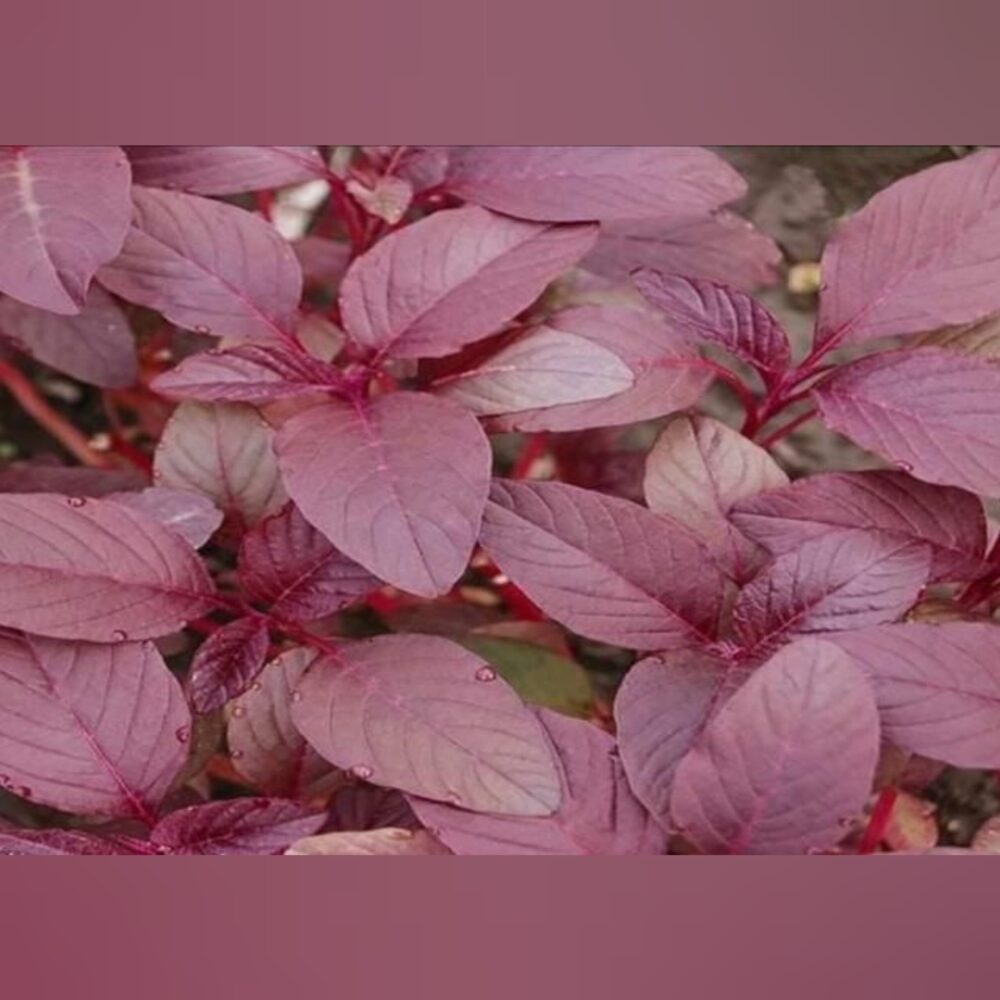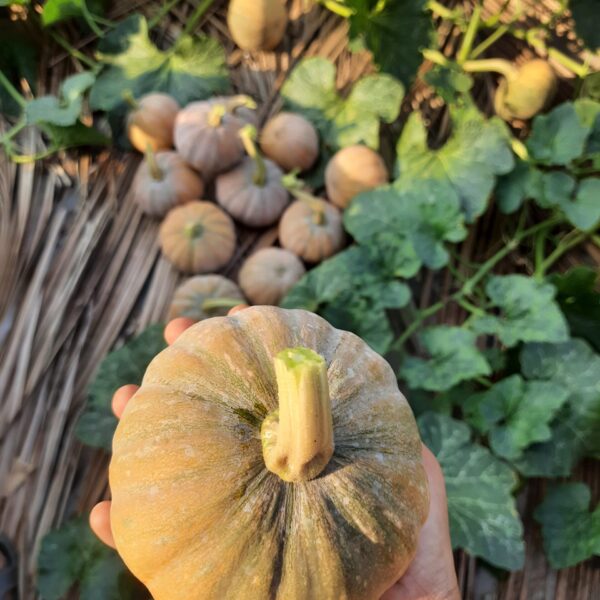Growing Red Amaranth (Amaranthus tricolor), known locally as செங்கீரை (Senkeerai) in Tamil, is a rewarding and relatively easy task, especially if you are cultivating it organically. Amaranth is a nutritious leafy green that thrives in tropical and subtropical climates. Here’s how you can grow Red Amaranth from seeds organically:
1. Choosing the Right Location
- Sunlight: Amaranth requires full sun to thrive. Choose a location that receives at least 6-8 hours of direct sunlight daily for healthy growth and vibrant colors.
- Soil: It grows well in well-drained, loamy, or sandy soil. Amaranth prefers slightly acidic to neutral soil (pH 6.0 to 7.5). The plant is quite tolerant of poor soils, but for best results, enrich the soil with organic matter.
- Space: Amaranth plants are tall and bushy. Allow at least 18-24 inches between plants to give them enough space to grow.
2. Preparing the Soil
- Clear the Area: Remove weeds, rocks, and debris from the planting area to reduce competition for nutrients.
- Soil Enrichment: Incorporate well-decomposed compost or organic manure into the soil. This will add the necessary nutrients and improve soil structure. Avoid synthetic fertilizers, as organic matter is the ideal nutrient source for this plant.
- Tillage: Lightly till or rake the soil to create a smooth, loose bed for seed sowing. This helps with seed germination and root penetration.
3. Planting the Seeds
- Timing: The best time to plant Amaranth is during the warmer months when the soil temperature is consistently above 60°F (15°C). Ideally, plant in early spring after the last frost has passed.
- Sowing Red Amaranthus (செங்கீரை) Seeds: Red Amaranthus (செங்கீரை) Seeds are tiny, so they need to be sown shallowly. Scatter the seeds evenly over the soil surface and lightly press them into the soil. Alternatively, you can plant them in shallow rows with about 1-2 inches of spacing between each seed.
- Covering the Red Amaranthus (செங்கீரை) Seeds: Lightly cover the Red Amaranthus (செங்கீரை) Seeds with a thin layer of soil or compost (about 1/4 inch deep). You can also lightly water to help settle the seeds into the soil.
- Germination: Seeds will begin to germinate in about 7-10 days under optimal conditions, which include warm soil (above 70°F / 21°C) and consistent moisture.
4. Watering and Care
- Watering: Keep the soil evenly moist, especially during germination and early growth. However, avoid over-watering as Amaranth doesn’t like soggy soil. Water the plants when the top inch of soil feels dry, but ensure good drainage to prevent root rot.
- Mulching: Apply a layer of organic mulch, such as straw, grass clippings, or shredded leaves. Mulching helps retain moisture, suppresses weeds, and adds nutrients to the soil as it decomposes.
- Thinning: Once seedlings have grown large enough (about 2-3 inches tall), thin them out to about 6-12 inches apart to allow room for growth and airflow. This is particularly important if you’re growing Amaranth in rows or beds.
5. Fertilization
- Organic Fertilizers: Amaranth grows well with minimal fertilization, but you can boost soil fertility by adding compost or organic manure at planting time. If the soil is poor, you can add a balanced organic fertilizer like fish emulsion or compost tea every 4-6 weeks.
- Avoid Synthetic Fertilizers: Organic methods are best, as they not only promote healthy plant growth but also maintain the environmental benefits of growing organically. Excess nitrogen fertilizers may encourage leafy growth but reduce the color intensity of the leaves and the quality of the edible parts.
6. Pest and Disease Management
- Common Pests: While Amaranth is generally pest-resistant, watch out for aphids, caterpillars, and flea beetles. To manage pests organically, you can:
- Neem Oil: Spray a diluted solution of neem oil to repel pests.
- Insecticidal Soap: If aphids are a problem, organic insecticidal soap can be effective.
- Hand-picking: For larger pests like caterpillars, hand-pick them from the plants.
- Weed Control: Keep the area weed-free to reduce competition for nutrients. Mulching helps a lot in suppressing weeds.
- Fungal Diseases: Amaranth can occasionally suffer from fungal diseases like mildew, especially in humid conditions. Ensure good air circulation around the plants and avoid overhead watering to prevent moisture buildup on the leaves.
7. Harvesting
- Harvesting the Leaves: You can begin harvesting leaves once the plants are about 6-8 inches tall, typically 3-4 weeks after sowing. For a continuous harvest, pick the outer leaves, leaving the inner leaves to continue growing.
- For Full Harvest: If you want to harvest the entire plant, wait until it is about 18-24 inches tall, and the leaves have reached a vibrant red color. Cut the plant at the base when it’s mature, or harvest in stages to encourage continuous leaf production.
- Flowers and Seeds: Amaranth flowers appear in tall, colorful spikes. If you want to save seeds for next season, allow the plant to mature, and let the seeds ripen on the plant. Once the seed heads dry, shake them gently to release the seeds. Store the seeds in a cool, dry place for next season.
8. Culinary Use
- Leafy Greens: The leaves of Red Amaranth are commonly used in soups, stews, and stir-fries. They have a slightly peppery flavor and are rich in vitamins, minerals, and antioxidants.
- Seeds: Amaranth seeds are tiny but packed with protein and can be cooked as a grain, added to granola, or ground into flour.
9. Saving Red Amaranthus (செங்கீரை) Seeds
- Harvesting Seeds: As mentioned earlier, the seeds are small and develop in large clusters. Allow the plant to mature and dry on the stem before collecting the seeds. If you want to save seeds for future planting, ensure that the plants are disease-free to avoid passing on any infections to future crops.
- Storage: Store seeds in an airtight container in a cool, dry place. They can remain viable for several years if stored correctly.
Additional Tips:
- Companion Planting: Amaranth grows well with other vegetables like beans, peas, and cucumbers. It also attracts pollinators and beneficial insects.
- Watering Consistency: Red Amaranth is fairly drought-tolerant once established, but it will produce better yields with consistent moisture, especially during the hot summer months.
- Protect from Strong Winds: The tall, leafy plants can be prone to damage from strong winds, so if you’re in a windy area, consider planting them near taller structures or fences for wind protection.
By following these organic gardening principles, you can grow healthy and vibrant Red Amaranth (செங்கீரை) with minimal inputs and enjoy its delicious, nutrient-packed leaves and seeds.
Red Amaranthus (செங்கீரை) Seeds







Reviews
There are no reviews yet.